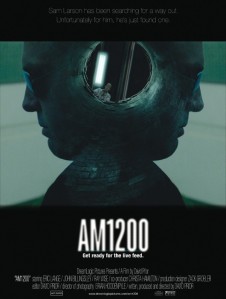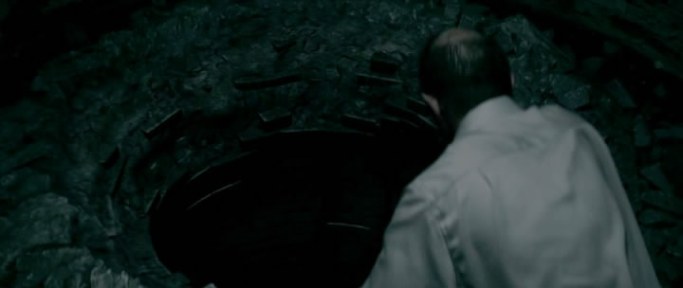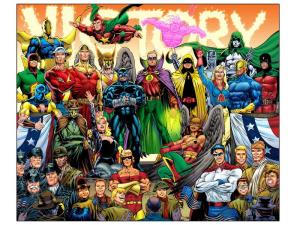To say that Gorgo was the British version of Godzilla is quite the unfair statement. It immediately creates some very big shoes for Gorgo to fill. However, it cannot be denied that Gorgo was heavily influenced by the legendary monster from Tokyo. But does it truly deserve a spot in the Honorary Kaiju Hall of Fame?
 Going to back to 1961, it’s important to remember where Godzilla was in regards to monster status. The original, Gojira, had been released in Japan in 1954 but hadn’t seen a theater in the states until 1956. There was only one other film in the series, Godzilla Raids Again, and even that was better known at that time under the title Gigantis, The Fire Monster. And that’s it…two films. Godzilla hadn’t even clashed with King Kong yet. So, in reality, the field was wide open for anyone to challenge Godzilla for the title of “King of the Monsters”. In 1961, director Eugene Lourie was given the task of bringing life into the tale of a monster emerging from the bottom of the sea and tearing up downtown London. He would never really venture into the genre again but is remembered for his art direction on the cult classic Shock Corrider (1963).
Going to back to 1961, it’s important to remember where Godzilla was in regards to monster status. The original, Gojira, had been released in Japan in 1954 but hadn’t seen a theater in the states until 1956. There was only one other film in the series, Godzilla Raids Again, and even that was better known at that time under the title Gigantis, The Fire Monster. And that’s it…two films. Godzilla hadn’t even clashed with King Kong yet. So, in reality, the field was wide open for anyone to challenge Godzilla for the title of “King of the Monsters”. In 1961, director Eugene Lourie was given the task of bringing life into the tale of a monster emerging from the bottom of the sea and tearing up downtown London. He would never really venture into the genre again but is remembered for his art direction on the cult classic Shock Corrider (1963).
The story behind Gorgo is simple enough. A salvage ship runs afoul of the weather off the coast of Ireland and drifts into a port where they receive a less than warm welcome. On the way there, they encounter dozens of fish floating in the water. After Captain Joe Ryan and first offer Sam Slade tangle with the harbor master, they are given until morning to leave. It turns out the harbor master has been bringing up gold from the ocean and wants no competition. Several men are soon missing and we discover why. There is a sea beast (who looks amazingly like a smaller version of Godzilla) that comes ashore before being forced back into the ocean. Ryan and Slade capture the monster and take him back to London. Once there, he becomes a featured attraction in a circus. Do these people not know the story of King Kong? It’s soon discovered that Gorgo is just a baby and his mother isn’t too far behind. What follows is the standard monster destroying the city scenario with destruction reminiscent of any Godzilla flick or even of King Kong and the Empire State Building. The only difference is that this time the destruction has a purpose as mother wants her baby back and is willing to demolish anything standing in her way.
The change in location is refreshing but the poor special effects do tend to make this movie seem a little cheaper than your average Godzilla flick, as hard as that may to be believe. At one point, there is a painfully obvious painting that is meant to be real. I had to rewind it to see if maybe it was just meant to be a painting but it clearly does not appear to be seen that way. There is a lot of matte work that simply doesn’t work well. It is cool to see Gorgo destroy the London Bridge. However, some of the battle scenes are reused, adding to the overall cheapness of the film.
The cast is appealing enough. Bill Travers plays Joe Ryan. Besides Gorgo, he is best remembered for Born Free (1966). William Sylvester is his sidekick Sam Slade. He did a few other genre flicks, such as Devil Doll (1964) and Devils of Darkness (1965). The somewhat annoying role of the young boy, Sean, was played by Vincent Winter, who is better remembered today for his work as a Production Manager on such films as Superman II (1981) and Indiana Jones and the Temple of Doom (1984). The rest of the cast was entirely male. We weren’t even given one obligatory screaming female to round out the cast.
Gorgo never generated a sequel but did spin-off into a comic book. Charlton Comics published 23 issues between 1961 and 1965. A few other random comics would be released over the years but the original series is still sought after by comic book collectors due to numerous contributions from Spider-Man co-creator Steve Ditko. Despite the lack of a sequel, the movie has remained a cult favorite. I really enjoyed it even though some of the poor special effects pulled me out of the moment from time to time.
Gorgo has just been released on Blu-ray, which is the obvious way to go. The picture has never looked better thanks to a newly discovered print in the salt mines near Hutchinson, KS. Less than half an hour from my home, these salt mines have been used for decades to store film copies to the preserving qualities found underground. It does make you wonder what else might be stored somewhere below the Earth’s surface. This Blu-ray has an assortment of special features, including two comic books, making this a title worthy of a Saturday afternoon matinee.
























